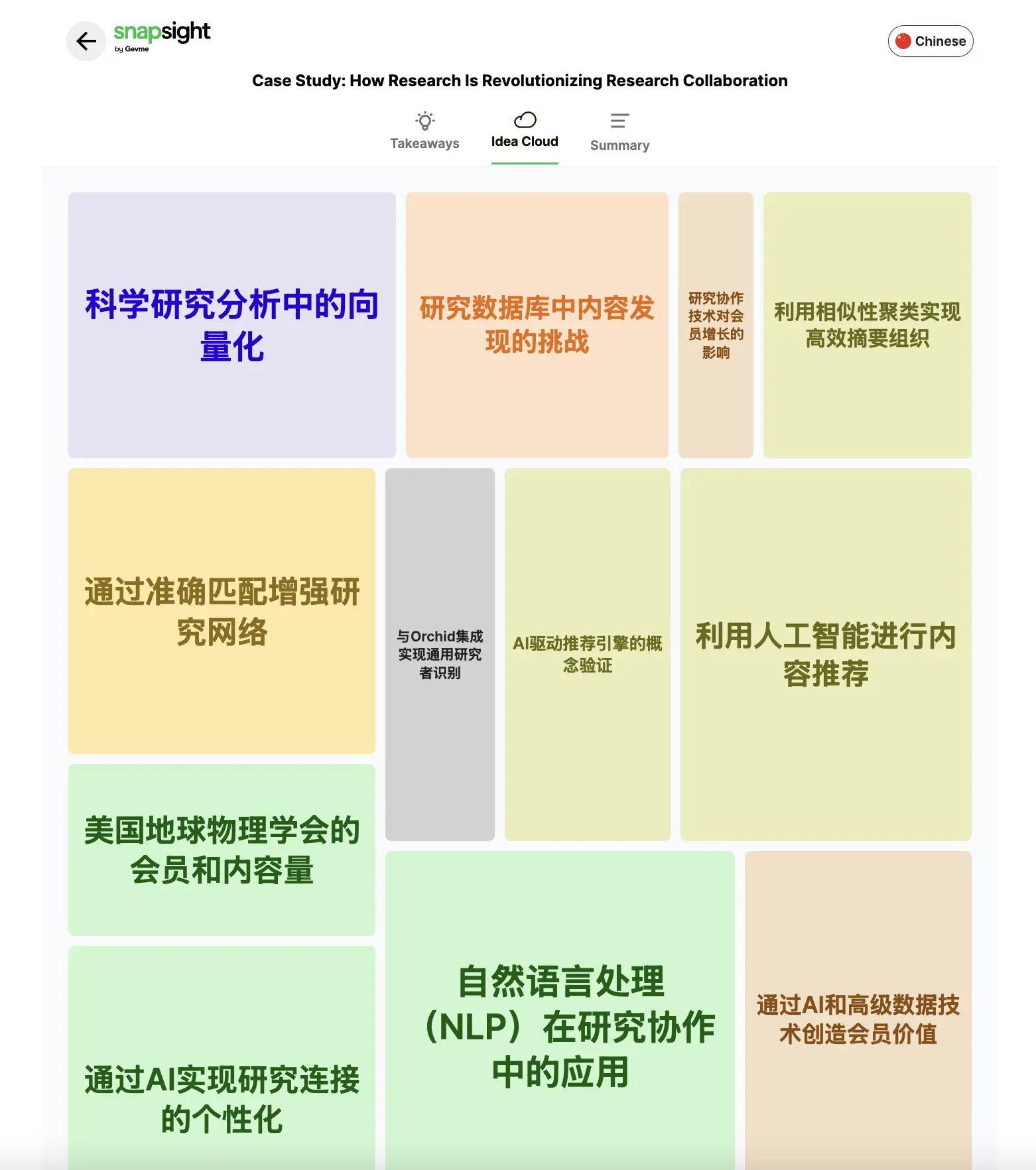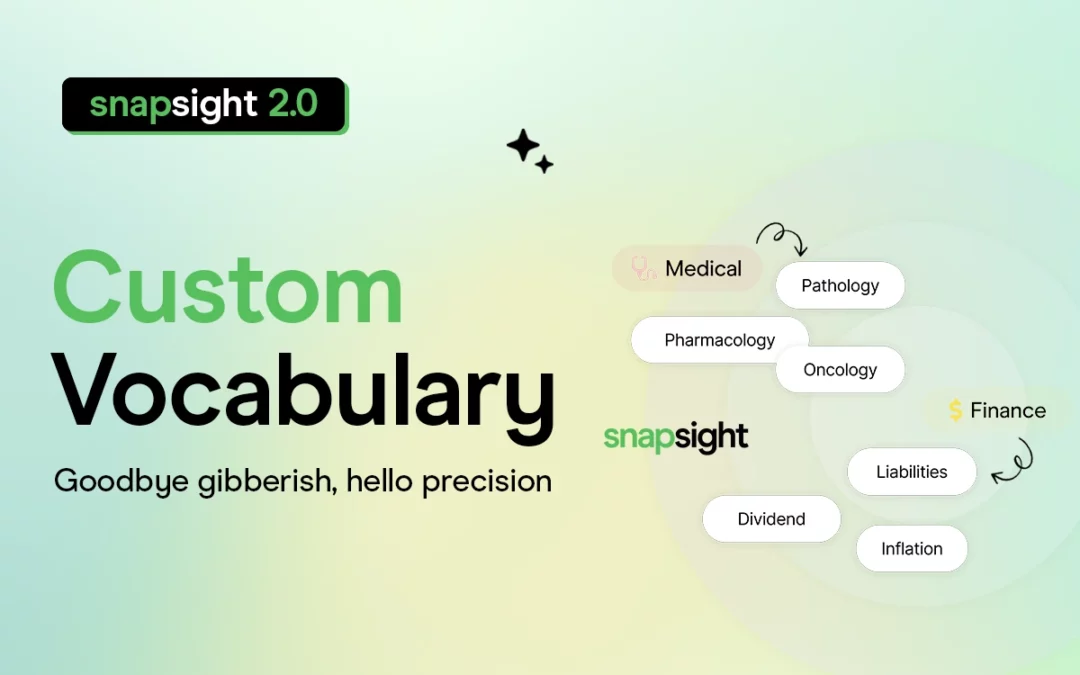That moment when you’re sitting in a conference session, frantically typing notes while trying to listen, and you think: “I’m definitely missing something important right now.” Then you glance up at the screen and see Snapsight has already captured and organized the exact insight you were struggling to articulate. It feels almost uncanny, like the system somehow knew what you needed before you did.
That’s not magic. It’s meticulously engineered AI working behind a deceptively simple interface. Here’s what’s actually happening when Snapsight seems to read your mind.
Why Understanding the Process Changes Everything
You’ve been to those events where the “summary” is just a hastily compiled transcript that no one ever reads. Snapsight exists because we’ve all suffered through those too. When you know how the system actually works, you can position your microphones, brief your speakers, and structure your program to generate summaries that attendees screenshot and share because they’re so dead-on accurate.
The Snapsight Engine Decoded

Behind that clean interface, Snapsight runs a continuous process that:
- Taps directly into your soundboard for studio-quality audio capture
- Maps who’s speaking when, even during rapid-fire panel exchanges
- Processes language in real-time to extract genuine insights (not just keywords)
- Visualizes how concepts interconnect across an entire presentation or event
The Foundation: Audio Quality That Transcription Services Would Kill For
Direct board integration
When you’re in the audience struggling to hear over the air conditioning hum, coughing, or the person three seats down taking a phone call, Snapsight isn’t. It’s getting crystal-clear audio direct from the mixer, capturing exactly what the microphone picks up without the ambient noise that makes most transcriptions nearly useless.
Audio processing that adapts
Even with perfect soundboard integration, speakers step away from microphones, audio levels peak unexpectedly, and feedback occasionally screams through the system. Snapsight’s preprocessing algorithms normalize these variations before transcription even begins, precisely why it captures that brilliant off-the-cuff remark your speaker made while walking to the whiteboard that would otherwise be lost.
Transcription That Genuinely Understands Context
Speech recognition that gets your industry
When your fintech speaker mentions “KYC requirements” or your medical panelist references “HIPAA compliance,” Snapsight doesn’t flag these as errors or unknowns. Its specialized language models recognize domain-specific terminology across industries, capturing the nuance that generic transcription services consistently miss.
The system also distinguishes between speakers, maintaining attribution even during heated panel debates when participants talk over each other, preserving the context of who made which point.
Pattern recognition beyond words
The platform learns from emphasis patterns, tracking when speakers slow down, repeat phrases, or change tone to stress important points. These paralinguistic cues help identify what the speaker themselves believes is most significant, often the exact insights attendees are scrambling to note down.
As AI-powered tools like Snapsight get smarter, they’re changing how event reporting works – and what that means for human note-takers. The balance between AI-generated summaries and human insight is shifting, raising big questions about the future of event reporting. Will AI replace human summarizers? Or will the two work better together? We break it all down in our deep dive.
The Transformation: From Words to Actionable Insights
Insight extraction that feels like mind reading
When Snapsight highlights that perfect quote or key statistic, it’s because its language processing has identified statement patterns that indicate significance. The system distinguishes between introductory remarks, substantive points, illustrative examples, and conclusive statements, weighting them appropriately in summaries.
It recognizes when speakers are answering questions directly versus providing background context, ensuring that direct answers to audience questions appear prominently in summaries, exactly what attendees need when reviewing sessions later.
The Idea Cloud: Connections you didn’t even realize were there
Traditional word clouds show frequency. Snapsight’s Idea Cloud reveals relationships, the conceptual architecture of the entire presentation. When you see seemingly unrelated terms connected in the visualization and think “that’s exactly the insight I was trying to formulate,” it’s because the system has mapped semantic relationships that exist in the content but might not be explicitly stated.
This is why attendees often report that Snapsight helped them understand complex presentations better. It’s not just repeating what was said, but illuminating how concepts relate.
Multilingual Intelligence That Preserves Meaning
Translation beyond word substitution

When international attendees access your summaries in their native language, they’re not getting awkward machine translations. Snapsight’s language models understand that “cutting-edge” in English doesn’t literally translate to “bord tranchant” in French. The system preserves the intended meaning across all 40+ supported languages.
Cultural context awareness
Regional expressions, cultural references, and industry idioms maintain their significance across translations. When your American speaker says a solution is “a home run,” Japanese attendees don’t see a baseball reference. They see a culturally appropriate equivalent that conveys the same sentiment of complete success.
Real-Time Deployment That Changes How People Engage
The synchronized experience
You’ve seen it happen: a speaker makes a powerful point, and immediately it appears on the summary screen. Audience members nod, take photos of the screen, or quickly share it on social media. This isn’t just convenient. It fundamentally alters how information is processed and retained during events.
The real-time feedback loop creates a dual-processing effect where attendees simultaneously absorb information through listening and visual reinforcement, dramatically improving retention compared to either method alone.
Personal access that transforms passive listening
When attendees scan that QR code and suddenly have the evolving summary on their own device, their relationship with the content transforms. They stop frantically typing and start actively thinking about and engaging with the ideas being presented. The platform has essentially outsourced the mechanical note-taking process, freeing attendees’ cognitive resources for deeper engagement.
Post-Event Intelligence That Keeps Working
The searchable knowledge repository
After the event, when that attendee thinks “there was a great point about customer acquisition costs, but I can’t remember which session,” Snapsight’s indexed database delivers exactly that section from the relevant session. The system has effectively created a semantic map of your entire event, making every insight retrievable long after the conference ends.
Content strategy informed by actual engagement
The analytics reveal which concepts generated the most attention, which questions resonated across multiple sessions, and which topics created unexpected connections. Event planners use these insights to shape future programming around what actually engaged their audience, not just what they thought would engage them.
The Technical Edge That Makes This Possible
Evolutionary learning architecture
Each event doesn’t just produce content. It makes the system smarter. Snapsight’s models continually refine their understanding of industry terminology, speaking patterns, and conceptual relationships. The platform you use at your Q4 event is measurably more effective than the one you used in Q1 because it’s learned from every session in between.
Implementation that doesn’t require a technical degree
Despite its complexity, the system requires only standard audio equipment connections and internet access. There’s no proprietary hardware to install, no complex calibration process, and no technical staff required to manage it during events. The engineering complexity stays invisible, letting you focus on content quality rather than technical management.
Security that protects sensitive discussion
All data transmission uses end-to-end encryption protocols, ensuring that proprietary information, unreleased product details, or sensitive strategy discussions remain protected. The system maintains the same level of confidentiality as the physical room where the conversation occurs.
Use Cases Where Snapsight Becomes Indispensable
Multi-track conference navigation
When your attendee has to choose between three simultaneous breakout sessions, Snapsight provides real-time insight into what they’re missing, helping them decide which session recordings to review later and eliminating the “wrong choice” anxiety that plagues multi-track events.
Remote participation that doesn’t feel remote
Virtual attendees engage with the same real-time summaries and concept maps as in-person participants, creating a shared reference point that bridges the physical divide and prevents the “second-class citizen” experience common in hybrid events.
Technical content accessibility
When your speaker dives into complex topics like quantum computing or regulatory compliance, Snapsight’s highlighting of key definitions and relationships makes the content accessible even to attendees without specialized background knowledge.
Media coverage with depth and accuracy
Journalists covering your event use Snapsight summaries to identify the most significant announcements and insights without misinterpreting technical details, resulting in more accurate press coverage that truly reflects your event’s content.
Optimization Strategies From Those Who've Mastered It
Speaker integration planning
The most effective event teams brief speakers on how Snapsight works, encouraging them to verbally highlight key takeaways and providing technical glossaries in advance for specialized terminology.
Audio engineering for intelligence
Top event producers configure their audio systems specifically to optimize for Snapsight, using directional microphones, proper leveling, and isolated audio channels that minimize crosstalk and maximize transcription quality.
Audience integration design
Strategic placement of summary screens and well-timed QR code displays transform passive consumption into active engagement, with the most successful events creating specific moments for attendees to review and reflect on captured insights.
Continuous refinement protocol
Sophisticated users implement feedback mechanisms where attendees can flag any gaps or misinterpretations, creating a human-in-the-loop validation system that continuously improves accuracy throughout multi-day events.
Content amplification strategy
Forward-thinking organizations develop specific plans for leveraging Snapsight outputs across their content ecosystem, feeding summaries into social media, extracting quotes for press releases, and transforming concept maps into visual content for post-event communications.
The True Value: Information That Actually Gets Used
Understanding what happens behind Snapsight’s interface reveals why it produces such eerily accurate summaries of your events. It’s not simply recording what’s said. It’s identifying what matters, mapping how concepts connect, and packaging insights in immediately usable formats.
This matters because the difference between information that changes behavior and information that gets forgotten isn’t just about content quality. It’s about cognitive accessibility. When attendees leave with clearly articulated takeaways that required minimal cognitive effort to capture, they’re significantly more likely to implement what they learned.
For event organizers, this translates directly to higher satisfaction scores, better sponsor retention, and increased attendance at future events. For attendees, it means the end of that sinking feeling when they return to the office, open their notes, and realize they can’t reconstruct the valuable insights they know they heard but failed to capture.
Snapsight doesn’t just summarize your event. It ensures the knowledge transfer you intended actually occurs.

